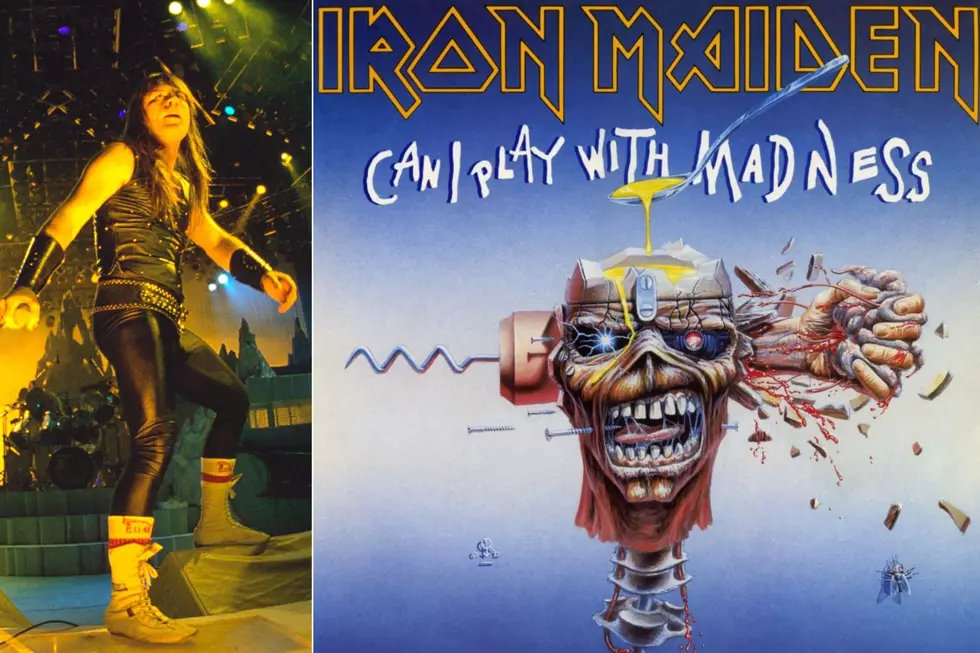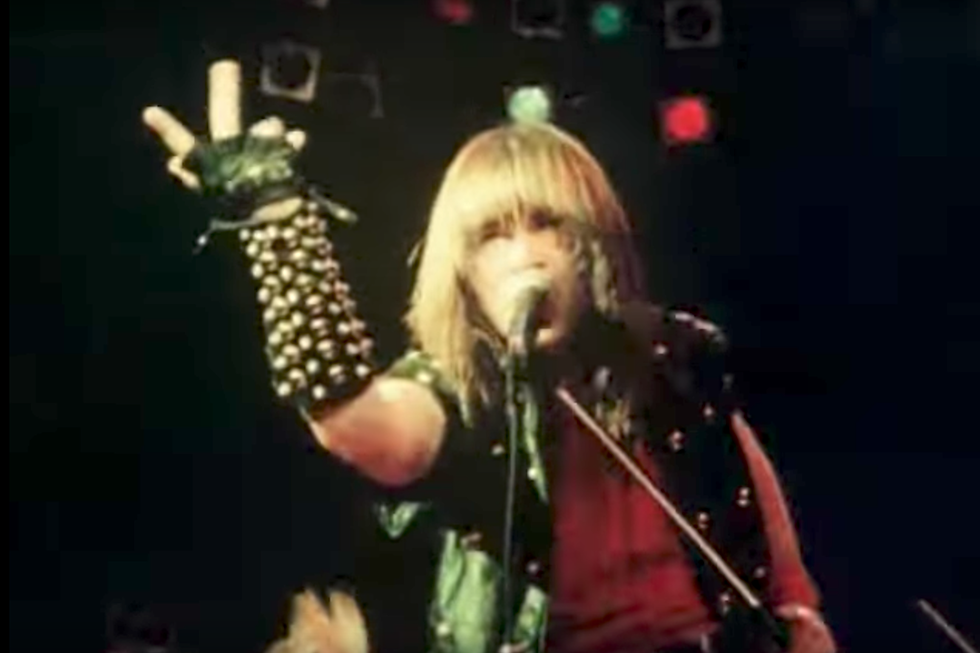
When Iron Maiden Played With Madness and Emerged Victorious
Iron Maiden reached all-new levels of conceptual, progressive grandiosity on their seventh album, the aptly titled Seventh Son of a Seventh Son. But they hadn't forgotten how to rock with abandon.
They proved it with the taut, radio-ready lead single "Can I Play With Madness," released on March 20, 1988.
The inspiration for Seventh Son began with the May 1987 death of Doris Stokes, the famous British spiritualist and self-proclaimed medium. "I just had a thought: 'I wonder if she could foresee her own death?'" bassist and chief songwriter Steve Harris mused in the band's 2013 Maiden England '88 documentary.
This question motivated their propulsive single "The Clairvoyant," which earned singer Bruce Dickinson's seal of approval. Harris then conceived Seventh Son's shapeshifting 10-minute title track. "Supposedly if you were born the seventh son of a seventh son, you had the powers of a clairvoyant," Harris said. "So I had those two ideas and Bruce went, 'You know what? We should do a concept album about this.'"
Watch Iron Maiden's 'Can I Play With Madness' Video
Dickinson was especially keen on the idea after Iron Maiden summarily dismissed his contributions to their previous album, 1986's Somewhere in Time. Unfortunately, he said the band never quite saw the album's concept through to completion.
"Somewhere in my dusty collection of moldy scribblings, I have the short story that tells the tale of the seventh son and his family issues and unrequited love that lead him to take a terrible and tragic revenge," Dickinson wrote in his 2017 memoir What Does This Button Do? "We never really consummated the story relationship: My lyrics alluded to the story, whereas Steve's didn't," he added. "None of this matters that much in the overall picture because the show, the album cover and the title track were more than epic enough to satisfy the faithful."
At the very least, Seventh Son reignited Dickinson and Harris' songwriting partnership, and "Can I Play With Madness" was the result of a collaborative effort between the two and guitarist Adrian Smith. The song tells the story of the titular seventh son, who visits a prophet to learn the fate of his seventh son and receives less than satisfactory answers.
"'Can I Play With Madness' actually started life as a ballad I had been working on called 'On the Wings of Eagles,'" Smith explained in the band biography Run to the Hills. "Then Bruce had a verse for it but wanted to change the title to 'Can I Play With Madness.' I must admit, it did sound better that way. So we took that one in and Steve liked it, too. It was Steve who came up with the time change in the middle and the instrumental passage, which again gave it that lift it needed."
Watch Iron Maiden Perform 'Can I Play With Madness' in 1988
With poppy vocal harmonies, swaggering pop-metal riffs and infectious keyboard melodies, "Can I Play With Madness" was a considerable departure from Iron Maiden's usual bone-crunching gallop. Its accompanying music video starred Monty Python's Graham Chapman as a stodgy art teacher who scolds a student for drawing Maiden's famous mascot Eddie. Chapman promptly falls through a hole in the ground and stumbles upon an underground vault, where he finds Eddie waiting for him inside a refrigerator. (It would be one of Chapman's last roles before his death in October 1989.)
These elements all helped propel "Can I Play With Madness" to No. 3 on the U.K. Singles Chart, Iron Maiden's best placement to date. (They would hit the top spot in 1990 with "Bring Your Daughter ... to the Slaughter.") "I was surprised when it was such a big hit," Smith said. "We'd had singles go into the charts before, but they flashed in and straight out again, usually. But this hung around here for ages, and they actually played it on the chart rundown on Radio 1 on a Sunday afternoon, which is something they'd never, ever done before."
"Can I Play With Madness" also became a bright spot on the road when the band embarked on the Seventh Tour of a Seventh Tour. "I think people were amazed when they saw us sing the opening part," Smith recalled. "We weren't exactly known for our harmonies. If I'd suggested harmonies when I first joined the band, I would have got beaten to a pulp, but me, Bruce and Steve would sing the harmonies live.
"It was quite simple, really, but very effective, and the audience loved it: They'd jump up and down from start to finish," Smith added. "Despite the title and whatever Bruce meant in the lyrics, it became a feel-good kind of song for the band and a real highlight of the show on that tour."
Top 25 New Wave of British Heavy Metal Albums
Iron Maiden's Rarest Songs


